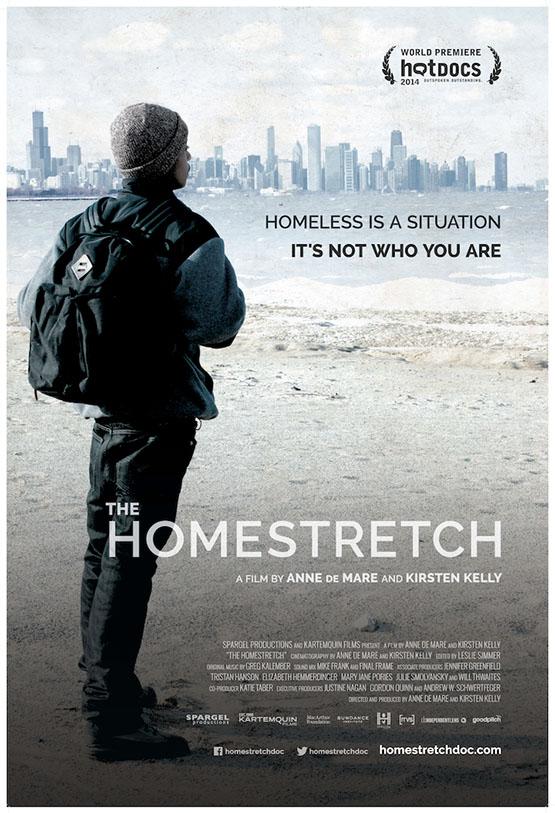The Homestretch
October 1, 2014
Imagine going to school knowing the night would consist of searching for a place to sleep.
“The Homestretch,” directed by Anne de Mare and Kristen Kelly, follows the story of three homeless Chicago teens. It is the first out of six films in the “Beyond Boundaries: Dare to be Diverse” series and was screened at the Burchfield Penney Art Center Thursday, Sept. 25.
SUNY Buffalo State’s Office of Equity and Campus Diversity, the communication department, the Office of Student Life, and the Burchfield Penney Art Center are partnering in this yearlong film series project to bring light to different social issues. Open panel discussions will come after four of the screenings, and two guest speakers are also expected.
Following the stories of Anthony, Roque and Kasey, audience members see how different circumstances can effect why someone is homeless.
Two out of three of the teens had families that were mentioned throughout the course of the documentary. Roque’s mother remarried and he was not invited to live with her and her new husband, though his sister was.
His father had landed into immigration issues and wanted nothing to do with him. He was the luckiest out of the three and was taken under the wing of one of his teachers, Maria Rivera. Rivera sympathized with Roque knowing what it’s like to have a tough time growing up.
Kasey left home after it proved to be a negative environment for her. Her mother and grandmother do not accept her as a LGBTQIA (lesbian, gay, bisexual, transgender, questioning, intersex and asexual) youth.
“I’d rather sleep outside because my family breaks me down,” she said.
Anthony came from almost eight years living in foster homes. After being adopted, he landed in a home full of abuse. Homeless since age fourteen, he aimed to turn around his life. After falling into street life, he wanted to be there for his son and find a way to be independent.
A general sense of homelessness was portrayed through scenes at the shelter known as “The Crib.”
Panelists after the documentary included Candice Fletcher-Pacheco, development director for Compass House, Diane Elze, board member for Gay & Lesbian Youth Services, and Jennifer Ditta, program manager for Second Chance Home, Homespace Corporation.
A staggering statistic states there are 19,000 students in “temporary living situations” in Chicago. In Erie County the number of homeless teens comes in at about 2,000.
Compass House provides an emergency shelter for runaway and homeless youth ages 12 to 17. Second Chance Home houses young mothers in the foster care system and can have a waiting list of up to six months.
LGBTQ youth make up 30 to 60 percent of homeless teens, depending on the sample taken.
“We have a certain percentage homeless queer youth because they may be rejected by their family members. In Kasey’s situation, she had a grandmother giving her shelter after her mother kicked her out but the grandmother’s rejecting behaviors were just too much for her to be comfortable,” Elze said.
The problem facing homeless youth is what to do next. There are currently no shelters tailored specifically to homeless youth ages 21 to 24 in Erie County.
“In our shelter we have 13 beds. Our kids age out the 365th day of their 17th year with limited options,” Fletcher-Pacheno said. “Watching ‘The Crib’ [Chicago Night Ministry emergency youth shelter], in the film almost closing leaves my heart wrenching because this could have been Compass House. Last year we lost all of our federal funding for the first time in our 42-year history.”
The Homeless Alliance of Western New York reports since 2013 there has been a 70% cut in funding to all New York State youth-serving agencies.
Homelessness is not an issue at the forefront of politics. But through organizational efforts and documentaries like “The Homestretch” maybe this louder voice for the voiceless will be heard.




